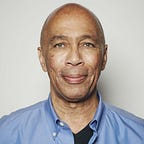Sally Hemings and the Road to Curdsville
This is one of those high-wire acts to which we writers have become accustomed. Reacting to an essay that touches a personal hot spot is risky, perhaps best attempted from the distance of space and most importantly time, and yet the emotions are real, in need of release without delay. When said release occurs during the reading of an important work of fiction that touches the same hot spot, not only touches but mashes, twists, pushes and pulls at it…well, high-wire doesn’t begin to describe what happens.
Two days ago, I read “Race is the Original American Fiction,” in which Andrew Mitchell Davenport describes his 2016 visit to Monticello. The subtitle of his piece, “On Reuniting with the Descendants of Thomas Jefferson’s Slaves,” caught my attention for reasons that will become obvious. What distinguishes this piece from other accounts of such reunions, the walkabouts on the old grounds, the men queueing up for DNA tests, is Davenport’s literary preamble, in which he quotes Clarence Walker’s contention that “…Jefferson and Hemings, as a mixed-race couple, rather than George and Martha Washington, should be considered the founding parents of the North American republic.”
Davenport does not mention the source of Walker’s words, the unfortunately named Mongrel Nation, (published, of course, by The University of Virginia Press), but that is small beer in the context of his narrative. He moves on from Walker to William Wells Brown, whose 1853 novel Clotel Davenport says “…has for its plot the Jefferson-Hemings liaison that Walker refers to.”
I read the end of that paragraph, but lost track of its last sentence as I continued on to Davenport’s description of the other attendees, including Sakeena, whose conversation occasionally lapsed into street jargon as she repeatedly observed that, after all, Sally had been a slave, no matter how romantic the historical portrayal. Davenport’s segue into his own childhood — “We lived in Redding, Connecticut, on a wooded property no more than a mile from where Mark Twain died.” — made me wonder if he really “got it.”
And then I went back to that last sentence of the first section: “Sally Hemings’ brother Peter is my ancestor.”
My mother (pictured above) grew up on a farm outside of Curdsville, Virginia. Despite having spent part of every summer until college on that farm, I didn’t know the town’s name until 2000. My grandmother always put the town name Dillwyn on the letters, scrawled in knife-sharpened pencil, that she mailed to us in Brooklyn. The family name was Hemmings, the second ‘m’ having been added by one of the earlier generations. I was very familiar with Farmville, about 13 miles south of our spread, and have memories of shoe factories in brick buildings with rail sidings, riding in the back of pickup trucks wedged in between bales of hay, and of course the apartheid signs on all the restaurants and public facilities. A white person who grew up in the area at that time recently corrected me: “Those weren’t apartheid signs, those were Jim Crow signs.”
I remember the picture at the top of this article, possibly from the wall of my grandmother’s bedroom in the farmhouse. It shows Harriet Hemings, daughter of Frances Eppes Hemings and Peyton Dean, granddaughter of Sally Hemings’ half-sister Mary, whose half-brother Peter is Davenport’s ancestor.
Annette Gordon-Reed’s authoritative The Hemingses of Monticello contains detailed family tree diagrams that confirm these relations. The relevant part of my tree stops with Frances Eppes Hemings, who married Peyton Dean. Harriet Hemings, their daughter, married Fossett Hemings and moved to Curdsville, about 50 miles south of Monticello.
The names run rampant through my childhood. I remember my mother talking about “Grandpa Fossett,” and the furtive comments about Sally being a “fallen woman” that I could only begin to decipher in adolescence. My great-uncle Peyton (not the husband of Frances, probably a son or grandson) ran a nearby country story with his wife Mary, who even in old age was the spitting image of Harriet’s mother Frances. My late mother’s only surviving sibling, also named Harriet, will celebrate her 101st birthday this year.
These artifacts, along with childhood memories of the red clay roads pocked with signposts that read “Appomattox” and such, lurk in the background as I finish Colson Whitehead’s The Underground Railroad, which just won the Pulitzer. I’ll have a good deal more to write when I’m done, including at least one personal essay on my theme of over-assimilation, which I touch on in my mini-collection of stories Three Lost Souls. The words of Whitehead, and Davenport, help marshall the swirling images in my head. I’m thankful to have such positive catalysts.
